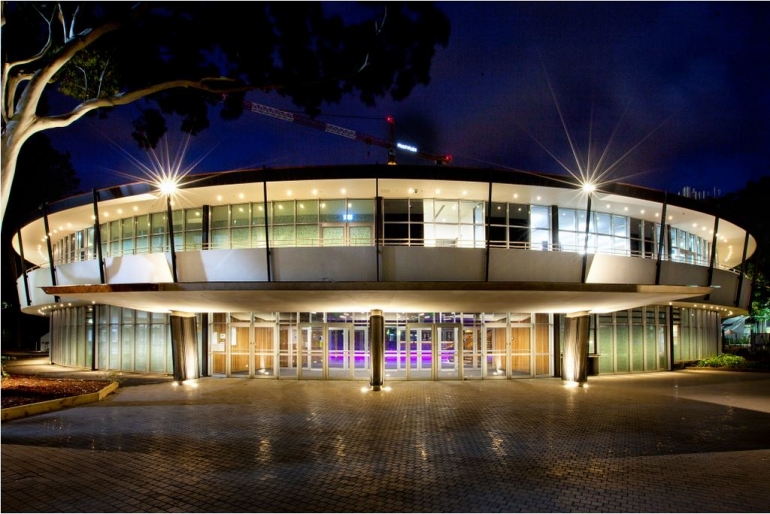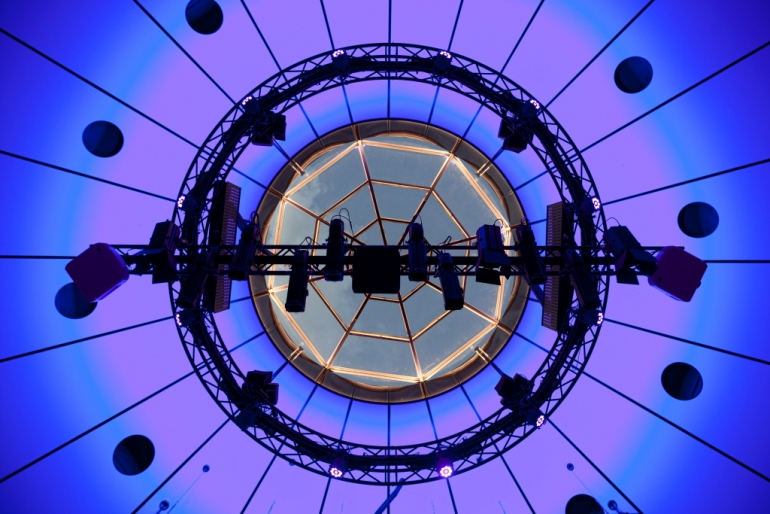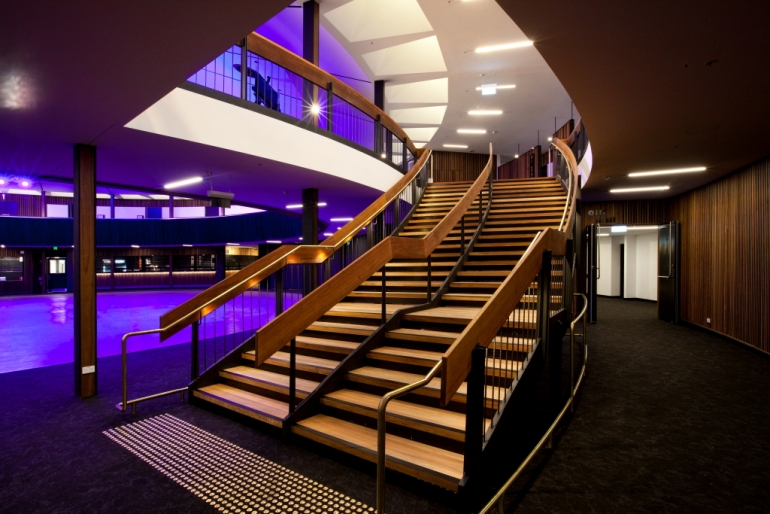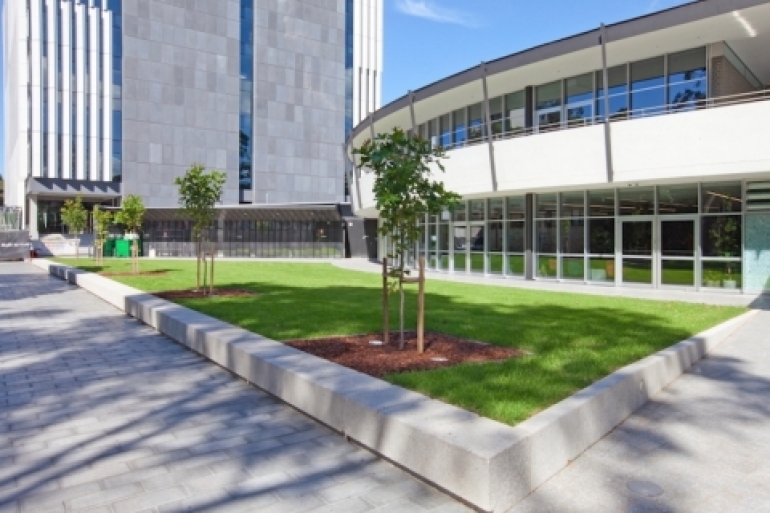The UNSW Roundhouse has received the NSW Architecture Award for Sustainability from the Australian Institute of Architects.
The accolade follows renovations to the multi-purpose venue, which includes upgrades to make the building’s heating and energy services more efficient.
The Roundhouse now shares energy services with the neighbouring Science and Engineering Building (SEB).
The original dome skylights, central oculus and façade were re-glazed to make the most of natural sunlight which will also reduce heat gain and loss.
Marmoleum-brand floor coverings have been used in the kitchen, with the material expected to last for more than 30 years.
NSW spotted gum which was chosen to withstand the building’s usage has been used to panel the walls and build the staircases.
The sustainably sourced, robust timber was finished using natural oil sustainably derived from the Tung tree to reduce internal pollutants.
A 535m3 rainwater infiltration tank has been installed beneath the lawn next to the Roundhouse to expand the campus rainwater capture system.
Rainwater and runoff is collected and flows into the tank, which then filters through the soil and recharges the Botany Sands Aquifer below.
Bore water extracted from the aquifer provides water for non-potable uses including laboratories, landscape irrigation, toilet flushing, cooling towers and the YMCA pool on campus.
The Roundhouse upgrade demonstrates a University-wide commitment to Sustainability.
Earlier this year, UNSW launched an ambitious Environmental Sustainability Plan 2019-21 (ESP). The plan is designed to address UNSW’s key environmental issues and defines commitments, targets and activities across ten focus areas including waste and recycling, energy and water efficiency, and buildings and campus.
UNSW Head of Environmental Sustainability William Syddall said that the renovation of the Roundhouse building demonstrates UNSW’s commitment to embedding leading environmental sustainability principles into the planning and operation of our campuses.
“By retaining the original structure and façade the team have reduced pressure on virgin resources and preserved the iconic character of the Roundhouse, while substantially enhancing its energy and water efficiency,” he said.
Tonkin Zulhaikar Greer Architects designed the renovations honouring the work of the original architect, Joseph W. van der Steen, by blending function and aesthetic with significant environmental and Sustainability considerations; and UNSW Estate Management delivered the upgrade.



